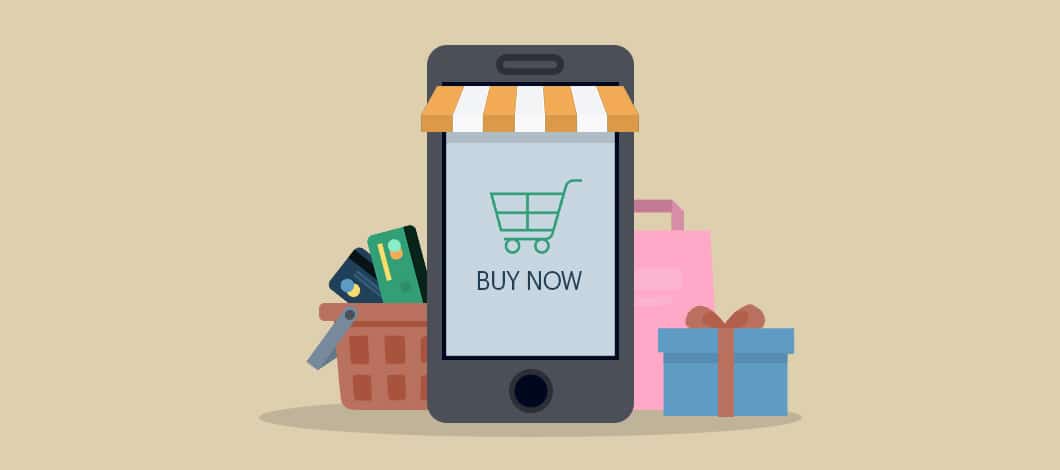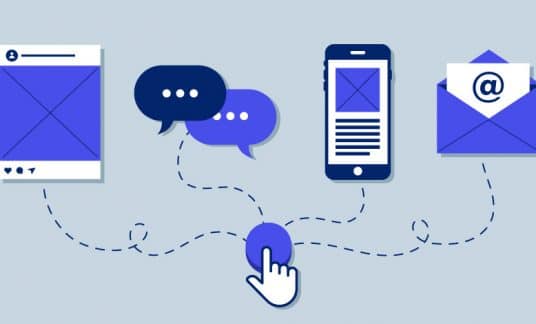Growing a successful ecommerce business is a difficult journey but it’s well worth it, especially now.
According to eMarketer, worldwide ecommerce sales will hit $5 trillion by the end of 2021 as more shoppers go online than ever before. The market research company also notes that 18% of all sales happened online in 2020, largely driven by necessity as the COVID-19 pandemic closed brick-and-mortar stores in most countries.
However, they predict ecommerce will account for 21.8% of all sales by 2024. That’s a 21% increase in 3 years.
There’s never been a better time to get into ecommerce.
We have 6 ecommerce success stories, complete with the strategies they used so you can implement them in your own business.
What Makes a Successful Ecommerce Business?
What is “success” anyway? It’s subjective. What you think success is probably isn’t what your neighbor thinks it is.
For some ecommerce owners, success is all about sales figures. For others, success could be expanding into a new region or preparing their business for sale so they can retire early or start a new venture.
You must document what you define success as before you start trying to expand your business. Otherwise, how will you know if your efforts are actually bringing you success?
Now onto the stories.
6 Ecommerce Success Stories You Can Learn From
1. $170,000 in 10 Months With 2 Ingredients
Condiment brand Bushwick Kitchen (formerly MixedMade) took a simple product, some good branding and a lot of public relations and sold $170,000 worth of spicy honey in its first 10 months.
Two friends started the business with a 30-day launch plan. That meant fully sourcing, developing, producing and having their product ready for sale within 30 days — a huge undertaking.
The pair spent the first few weeks testing recipes to find the perfect blend of sweet and spicy for their first product, Bees Knees Spicy Honey, which is a simple yet precise mix of chili peppers and locally sourced honey.
The pair credit their networking abilities with the success of their first launch, which netted about $1,000 in pre-sales before the 30 days was up. From there, they experienced a 2,200% growth leading into the holiday season. They sold $100,000 worth of their products in December alone.

They have since developed several other products, including spicy maple syrup, sriracha and more flavors of their iconic honey.
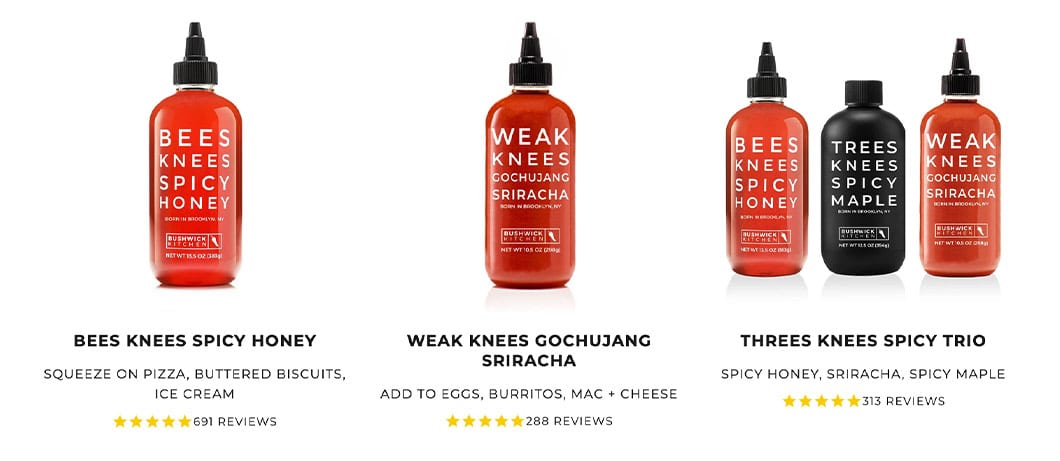
What You Can Learn From Bushwick Kitchen’s Success
- Don’t underestimate the power of public relations. Follow up on every press lead you have and get coverage early on. You may not see an increase in sales right away, but it will come.
- Leverage your friends and network for recommendations on everything from web designers to accountants.
- Set deadlines for yourself. Yes, 30 days may seem too fast, but you’d be amazed what you can achieve with a deadline.
2. Dollar Shave Club: The Power of Branding
Almost everyone knows Dollar Shave Club, one of the most successful direct-to-consumer ecommerce subscription services ever created. Founded by Michael Dubin, the company was purchased in 2016 by Unilever for $1 billion, according to Fortune.
The secret to Dollar Shave Club’s rapid growth: video content marketing.
When Dubin founded the company, he was working in marketing and creating promotional videos for brands. His uncle wanted him to sell a large stockpile of razors he’d acquired and at first it looked like a losing game. At the time, Procter & Gamble (maker of Gillette) had a 70% market share of the entire shaving industry. 5 years later, that share was down to 54%, according to Euromonitor.
How did Dubin grow the business so quickly to knock a massive corporation’s market share down in only a few years?
He leaned into his talents as a video marketer and produced a tongue-in-cheek video promoting Dollar Shave Club in 2012, which he also starred in. The video resulted in 12,000 orders within 48 hours of its launch.

The video instantly makes the case for the club — $1 a month for razors you already spend way more on at retail prices. And, it pokes fun at the “big brands” who are known for overly technical commercials talking about how many blades and features they have.
The video uses humor to attract an audience with quips like, “Your handsome grandfather only had one blade … and polio.” The video worked because it used humor to get attention and authenticity to sell.
And it still works today. According to data collected by Second Measure, about 50% of Dollar Shave Club’s customers are still with them after 1 year, an extremely high retention rate in ecommerce.
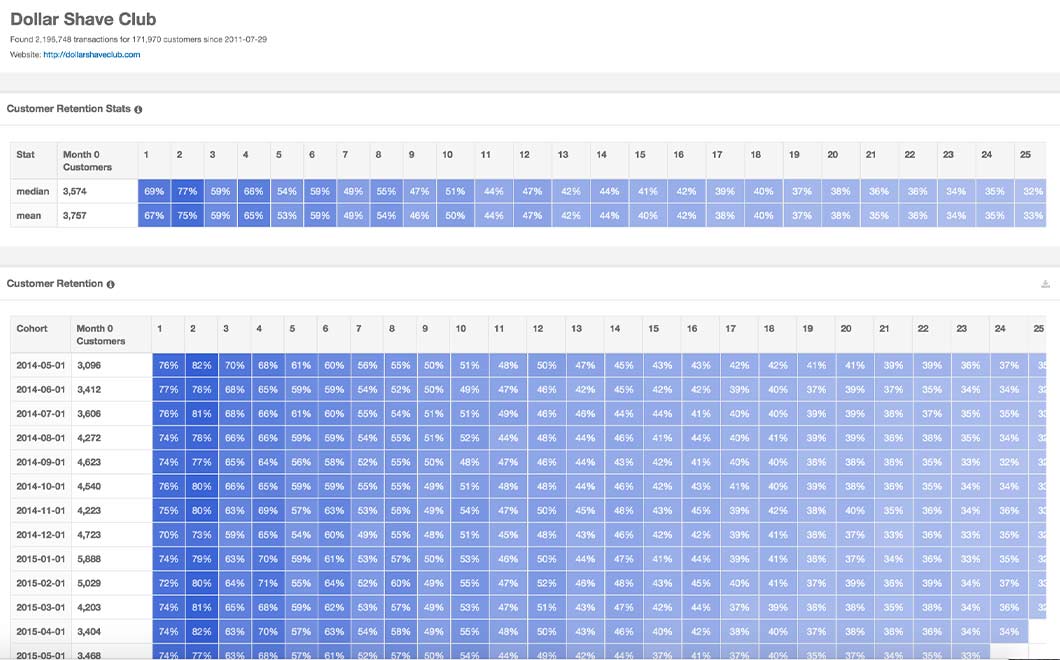
What You Can Learn From Dollar Shave Club’s Success
- Know your customer. Know what messaging attracts and converts them.
- Be prepared to go viral. Have a team on standby who can help you fulfill orders if you hit an unexpected spike.
- Differentiate your brand from your competitors starting Day 1.
3. Beer Cartel Succeeds With Content Marketing
Beer Cartel is an Australian ecommerce store selling more than 1,100 craft beers within Australia. In 2017, the business wanted a way to grow their sales, mailing list and brand reputation.
So Beer Cartel turned to content marketing, but not articles or videos about beer. Instead, the company launched the 2017 Australian Craft Beer Survey.
This is clever because it was posing as a research project, but it was free market research for the company.
The survey asked demographic questions along with ones about the types of drinks people had over the last month and their beer preferences.
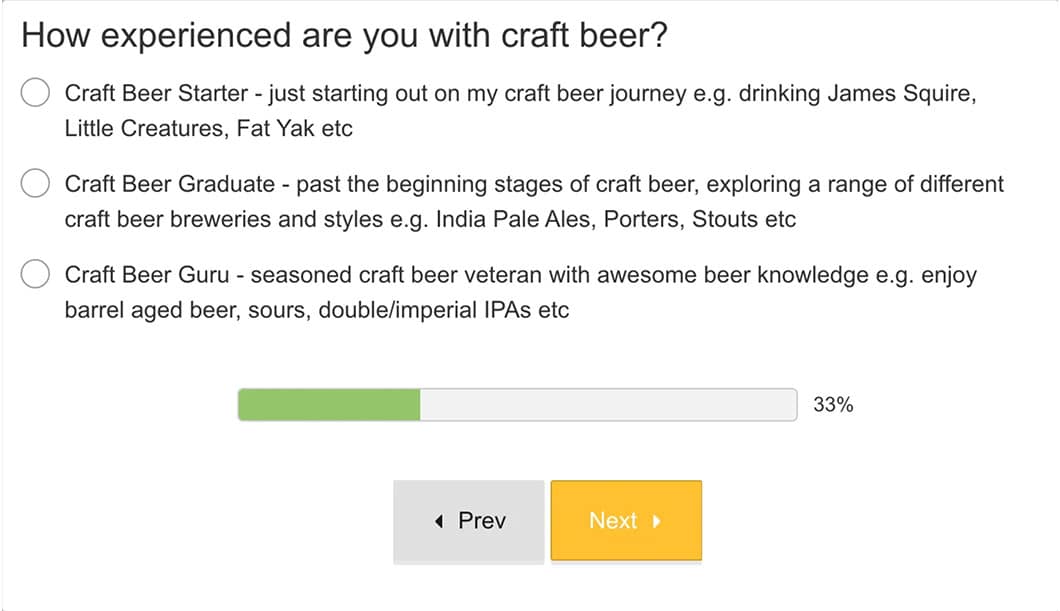
To get the word out about the survey, Beer Cartel approached other brands in the industry and asked them to share it with their audience. For doing so, the other brand would get a report of the survey’s data at the end. In other words: juicy customer insights for free.
To entice consumers to take the survey, Beer Cartel had a prize drawing of 500 Australian dollars worth of craft beer, and everyone who took it received a A$10 coupon. The survey received 17,000 responses, according to Beer Cartel.
That’s impressive for growing an audience quickly but the business results were even more impressive. Their site traffic increased 100%, their mailing list was up 130% — and most importantly — revenue increased by 34% versus the previous year.
What You Can Learn From Beer Cartel’s Success
- Innovative content doesn’t need to cost much to massively grow your business.
- When reaching out to other brands for partnerships, always offer an incentive for their participation.
- Customers love contests and coupons and will answer a lot of questions to get them.
4. Amazon Associates: The World’s Most Popular Affiliate Marketing Program
No, this isn’t a story about how Jeff Bezos got so rich.
This ecommerce success story isn’t about Bezos at all. It’s about everyday people. Anyone can sign up for Amazon Associates, which pays people up to 10% commission for sales they refer to Amazon via their unique tracking links.
Amazon Associates is popular with bloggers, allowing them to monetize their latest desk accessory, for example. They link to it, their readers click the link and purchase it (or anything else on Amazon) and the blogger earns a 1%-10% commission on the entire sale, just for sending a customer Amazon’s way.
The program isn’t only for bloggers. Anyone can join and even big names like USA Today, GQ and Epicurious are members.
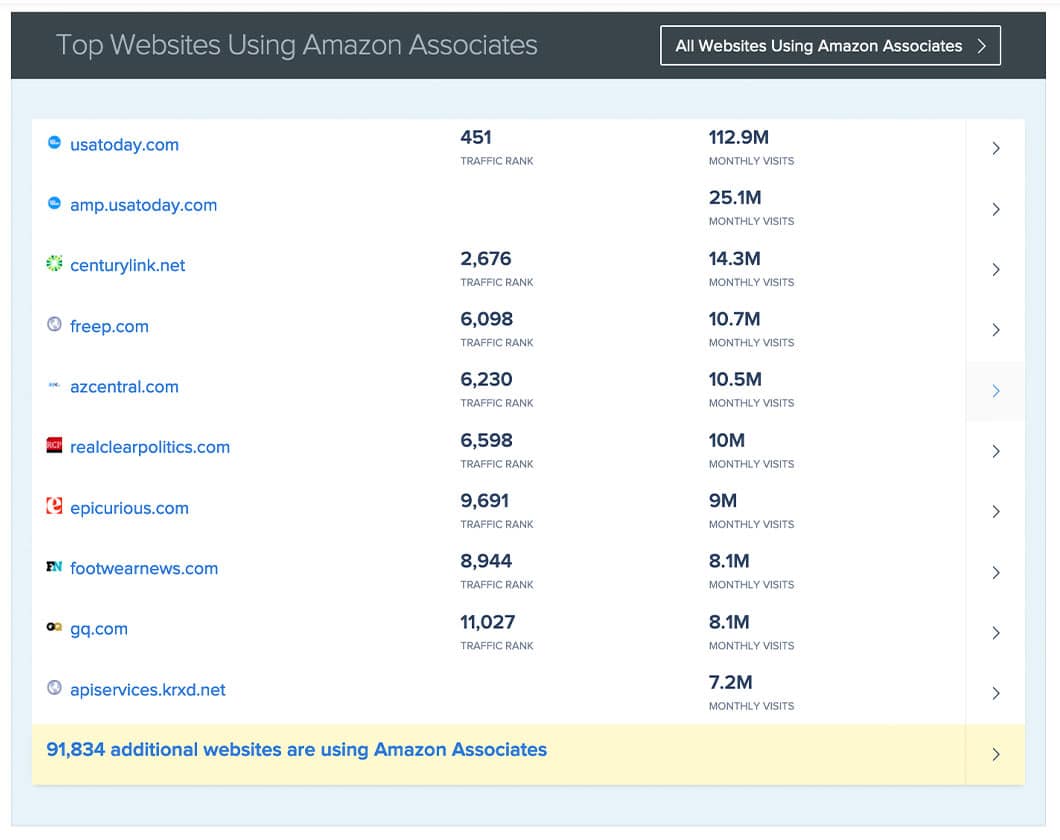
There are many affiliate programs out there. But Amazon took it mainstream, having launched their program in 1996. Now, it spans multiple countries and has a total of more than 90,000 websites sending traffic their way, according to data from SimilarTech.
What You Can Learn From Amazon’s Success
- Start your own affiliate program.
- Statista predicts affiliate marketing spending will exceed $8 billion in 2022. It’s not too late to jump in.
- Nearly 35% of affiliates earn at least $20,000 annually from their affiliate partnerships, according to AffStat. Influencers, bloggers and publishers want to work with you.
5. Turning a $5,000 Investment Into $1.1 Billion
Sara Blakely is the youngest self-made female billionaire in the U.S., according to Forbes. She started it all with a $5,000 investment and an idea she wouldn’t give up on.
As the story goes, she had the idea for the now-famous shapewear company Spanx when she was looking for something to wear under clothes to smooth her appearance, but that wouldn’t create visible lines. Nothing out there existed. She took all the savings she had ($5,000) and attempted to make her own product line, believing so much in her idea.
She was rejected by a number of hosiery manufacturers that refused to work with her to design and create a prototype.
Her $5,000 total wasn’t enough to hire a patent lawyer either, which she knew was important to have. Instead of giving up, Sara researched how to file her own patent and did so. Eventually, after a lot of rejection, she found a manufacturer to create a prototype for her too.
She launched the Spanx website in 1998. According to Forbes, she had a net worth of $1.1 billion in 2019 and is a guest judge on the venture capital television show, “Shark Tank.”

What You Can Learn From Spanx’s Success
- There is a solution to every problem.
- If you don’t know how to do something, learn it.
- Believe in your idea even if no one else does.
6. From Growing Up Poor in China to Launching the World’s Largest IPO
Jack Ma, the founder of ecommerce giant Alibaba, grew up poor in communist China. Now in 2021, he is the second richest person in China with a net worth of $48.4 billion, according to Forbes.
Growing up without connections or wealth, he had to rely on ingenuity and education to get ahead. As a teen, he hustled downtown offering to be a tour guide for tourists in exchange for English lessons. He failed his college entrance exam twice, eventually getting in on the third try.
That grit paid off. He got a job as an English teacher after college. His interest in ecommerce began when he visited the U.S. in 1995 for work and was amazed at the potential of the internet to transform business. Once home in China, he searched online for “beer,” but no results came up. It was then he decided to create an online business in China.
As with most entrepreneurs, his first 2 businesses failed. But 4 years later, he struck gold with Alibaba. Alibaba allows manufacturers — most of them Chinese — to list their products on a marketplace. From there, foreign importers can directly purchase and communicate with these manufacturers.
In 1999, Alibaba raised $25 million in investment from SoftBank, Goldman Sachs and others. In 2015, Alibaba went public with the world’s largest IPO ever according to The Motley Fool, raising $25 billion.
Alibaba’s revenue has grown dramatically every single year, as you can see from Statista.
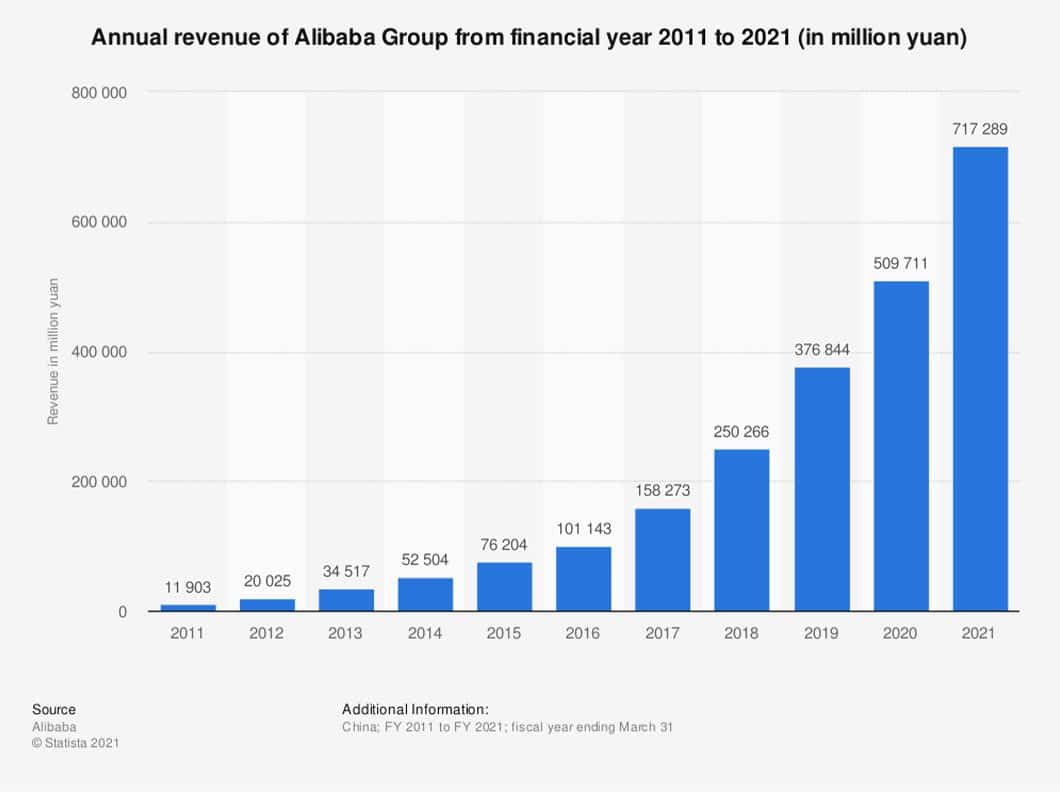
Ma’s early adoption of new technology combined with spotting a hole in the market is the secret to his success. Along with a hearty dose of perseverance too.
What You Can Learn From Alibaba’s Success
- Don’t be afraid of new technology.
- Keep your employees happy and they’ll work hard for you.
- Don’t be afraid to fail.
No More Excuses: Find Your Path to Ecommerce Success
Hopefully, these ecommerce success stories have inspired you to take action within your own business.
Each ecommerce business is different, but there are a few universal truths for growth:
- Grit gets more done than knowledge.
- Innovative thinking will always set you ahead of the pack.
- Your content doesn’t need to cost a lot to go viral or be effective. Strategy is more important than how polished it is.
What action are you taking today to grow your ecommerce business?



